Chevrolet History - Part 1: Built for revenge
Published February 4, 2025. Written by Andy Wassef.
Photo courtesy of the Petersen Automotive Museum archives
He was called "Billy" to his friends, "Pops" to his daughter, and "The Man" around Flint, Michigan. William Crapo (pronounced Cry-boo) Durant was also considered by many to be the "Greatest Salesman of All Time". Durant, who was an avid checkers player, seems to approach business in much the same way: as a challenge and something to be won. That's how the 49-year-old Durant saw the situation in 1910, when, due to financial difficulties across GM's portfolio flowing from automobile concerns, he was forced to cede control to the bankers who bailed out the fledgling merger. Her removal from the presidency and relegation to one minuscule seat on the board of directors did not please Durant, who saw GM stripped of its basics—Cadillac, Oldsmobile, Oakland (later Pontiac, for the city where it was founded), and Buick, among a few other brands. Durant decided to regain control of his "baby." Despite being a millionaire several times over at that point, he was still “the little guy” when compared to the major financial institutions he would challenge. It will be like David versus Goliath. Durant, along with his brother-in-law - a former doctor who became a close friend and advisor to Dr. Edwin Campbell - hatched a plan to restore General Motors into an American version of automobiles. The Count of Monte Cristo. This plan was conditional on the fact that there would be a Durant conglomerate, and an integral part of this conglomerate was a company that could compete with Ford. And thus Chevrolet was born.
To tell Chevrolet's story, we must first understand the context of its origins and the backstory of the man who orchestrated this artistic hit. Durant was a financial wizard, an irresponsible gambler, an incurable optimist, and a forward-thinking visionary. A journalist once wrote that Durant believed that the million was the basic unit of American currency. He began his career in the vehicle business as co-founder of the Durant-Dort Wagon Company with J. Dallas Dort. The endeavor was very successful. It was one of the best-selling wagon manufacturers in the game, and it contributed to Durant's financial situation.
He was so well off that he was getting bored. He frequently traveled to New York City to spend time studying and investing in the stock market. If his beloved city of Flint had not been in danger of losing its “Motor Vehicle City” moniker, Durant might not have stepped in at the behest of his friend Ben Briscoe to purchase the struggling Buick brand in 1904, thus launching Durant’s second act, this time in the automobile industry.
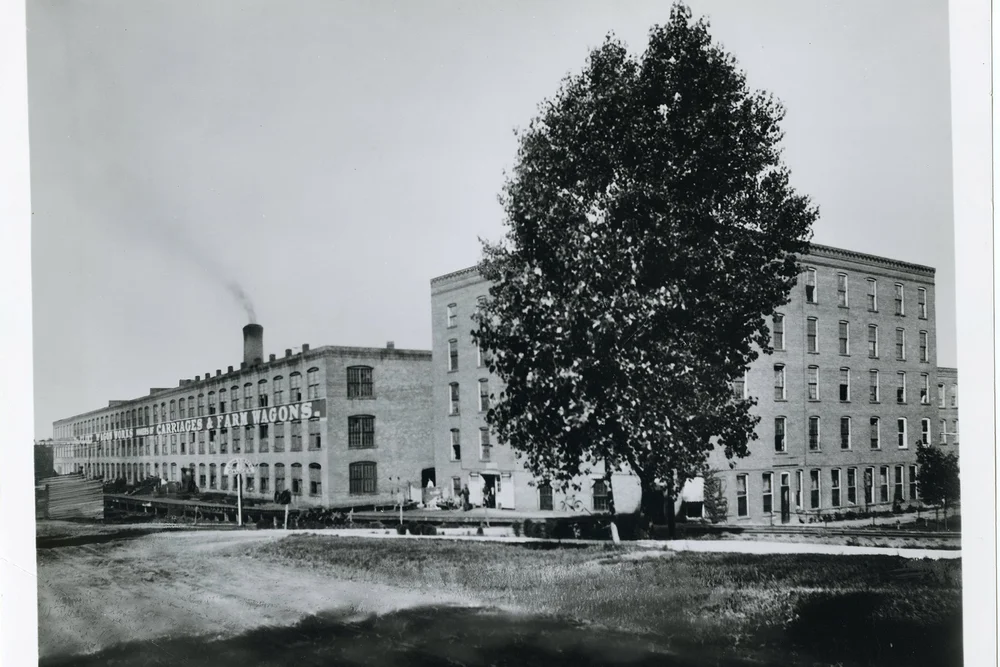
Photo courtesy of the Petersen Automotive Museum archives
Fast forward to 1908, when Briscoe approached him again with a one-word proposal: consolidation. The automobile industry at that time remained largely speculative, with several hundred companies founded to produce and sell cars and dozens still doing so. No one knew which brands would survive. Uniting the strongest and most successful companies can help ensure longevity.
Durant loved the excitement of new acquisitions, but controlling them did not interest him. Between 1909 and 1910, he bought any company he thought had potential. Cadillac has won the Dewars Award multiple times; Oakland won the hill climb. Welch had an overhead cam engine. Cartercar used a friction drive system. Durant purchased it using General Motors stock certificates, although he personally purchased the Elmore Motor Car Company and its two-stroke engine for $550,000, and later sold it to General Motors for a profit of $50,000. It also bought manufacturers and suppliers of spare parts.
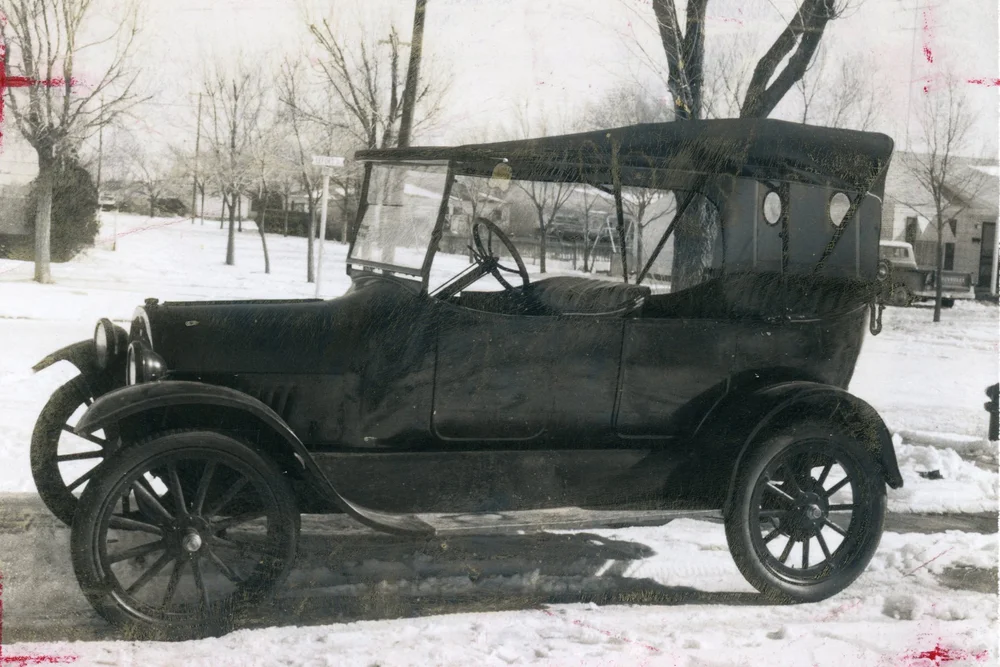
Photo courtesy of the Petersen Automotive Museum archives
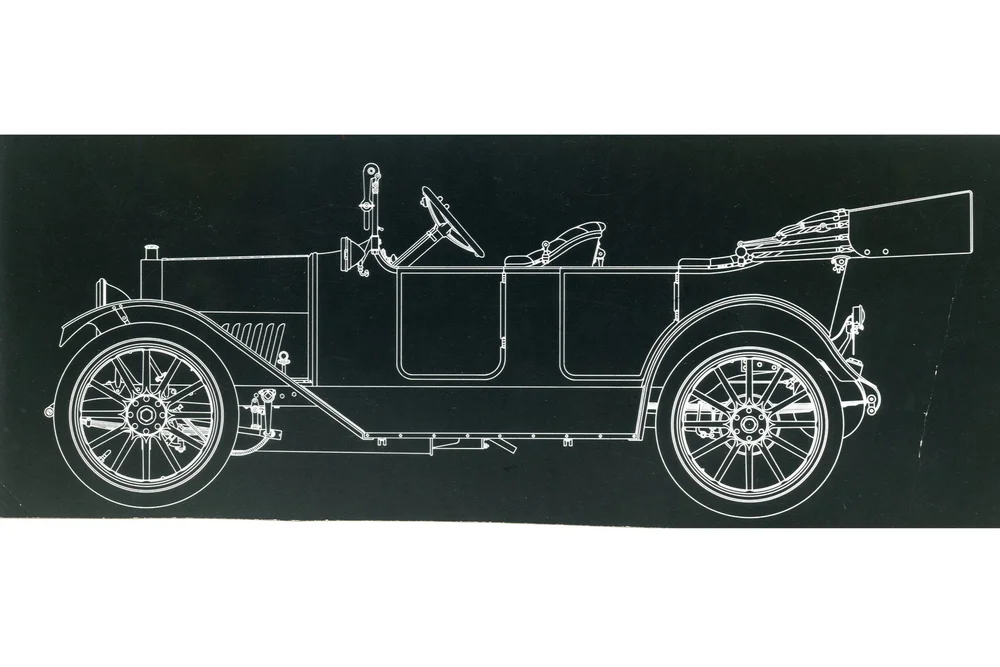
Photo courtesy of the Petersen Automotive Museum archives
(Fun fact: Durant approached Ford twice about selling to General Motors. Both times, Ford agreed. But the bankers scuttled the deal both times, rejecting the number and saying, "Ford's not worth $8 million." Too late, they say.)
But not all companies performed well. Some doors had to be closed. In order to save jobs, Durant sought the help of bankers. These bankers, led by James Storrow, agreed to advance $19 million and sign a five-year credit agreement, effectively neutralizing Durant's power. That was September 16, 1910, two years after General Motors was founded.
With bankers shrinking companies from General Motors left and right, Durant knew that meant a lot of people would be out of work, and he hated to see that happen. Flint was in danger of once again finding itself lagging behind other industrial cities. Durant saw another challenge ahead of him and decided to take back control of the company he had built.
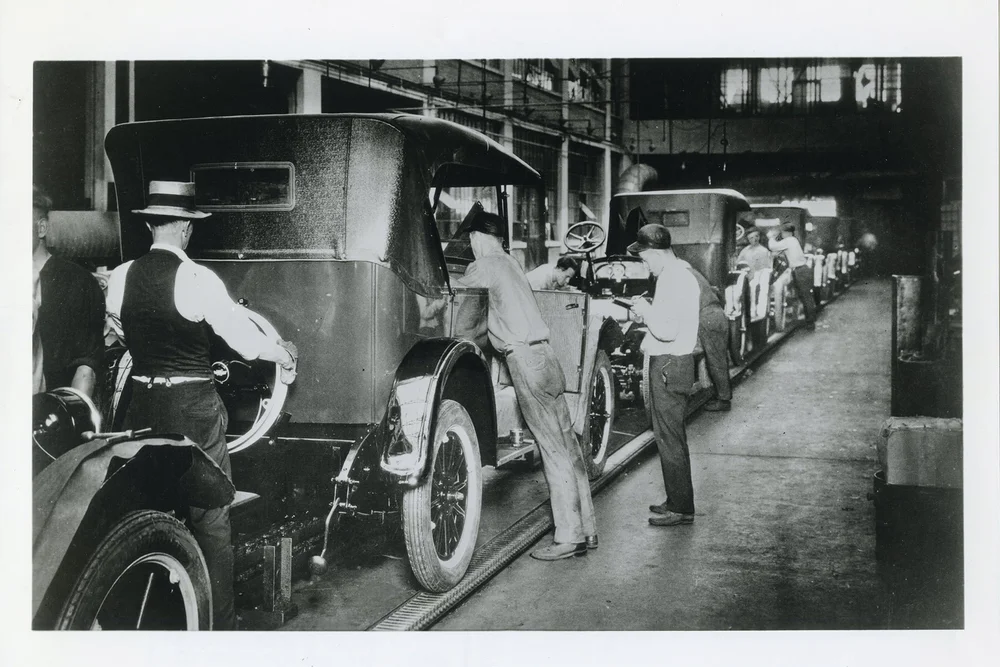
Photo courtesy of the Petersen Automotive Museum archives
For the first phase of Durant's plan, he recruited his deep reservoir of talented industry professionals. William Little, former general superintendent of Buick, was commissioned to build a 4-cylinder light car called the Little Motor Car. Former Buick engineer Arthur Mason was to help with the engine and design of the Little Fours. ABC Hardy, former manager of the Durant-Dort subsidiary, was named production manager. The former Buick race car driver originally from Switzerland was given his own trademark for its design. This race car driver was Louis Chevrolet.
Durant created Republic Motor Company as a holding company and incorporated the Sterling Motor Company, which built 6-cylinder engines for Little.
Ironically, Lewis and Durant didn't agree on many things. Durant realized that the greatness of the Ford Model T lay in its accessibility to the buying public. It was cheap and relatively reliable. In 1908, Buick was only 20% behind Ford in sales. By 1912, Buick was selling less than one-sixth as many cars as Ford after bankers disposed of a variety of Buick models. Therefore, Durant wanted a direct competitor to the Ford "Teen Lizzie." Conversely, Lewis focused on building luxury cars, a strategy that did not fit Durant's plan.
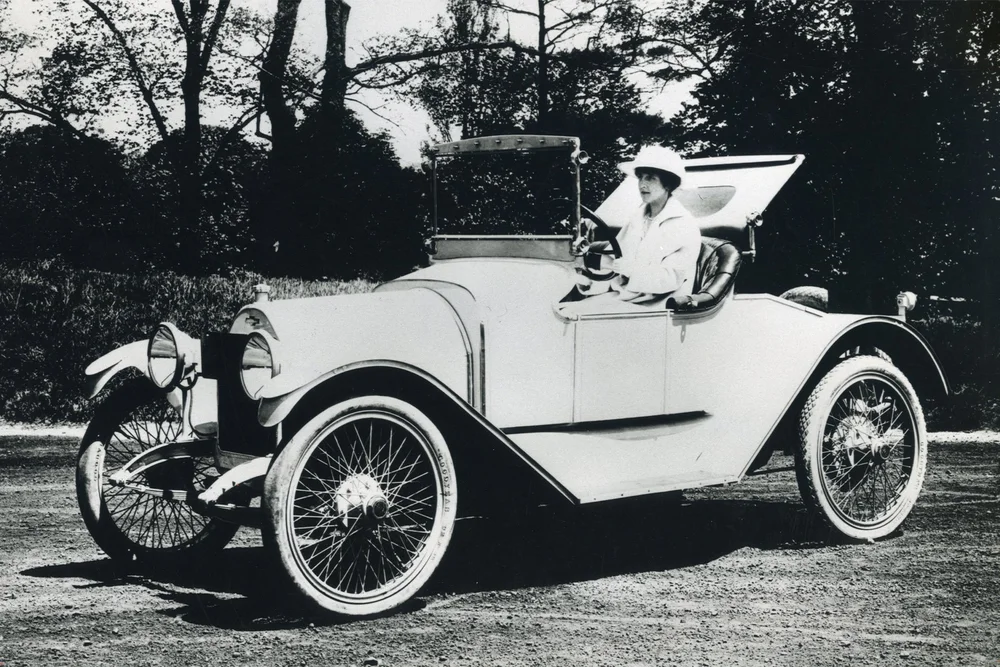
Photo courtesy of the Petersen Automotive Museum archives
Also, Louis smoked cigarettes, and had her butt hanging from his lower lip most of the time. Conversely, Durant was a cigar man, having sold them when he was younger. Durant chided Lewis that, as a CEO, a cigar was the most appropriate accessory. This ridicule, coupled with the fact that Lewis was designing luxury cars instead of what Durant wanted, led to Lewis resigning from the company that bore his name.
Ironically, Durant now owned the rights to the Chevrolet name (which he loved), so Lewis would not be able to use it. Around this time, Hardy advised Durant that the small car name did not connote a cool image, so the Chevrolet (or Chevy, as it was shortened) nameplate was placed on all small cars.
Chevy's first production car was the somewhat innovative Classic Six of 1912, a 4-door, five-passenger vehicle with overhead panels, trunk, and running gear. The Chevy was now cooking with gas. But there was a lot of work to be done in order to compete with GM, let alone Ford. With the help of A. T. Stewart, who designed the bodywork for Buick and was working for Chevy, the new brand continued to make progress.
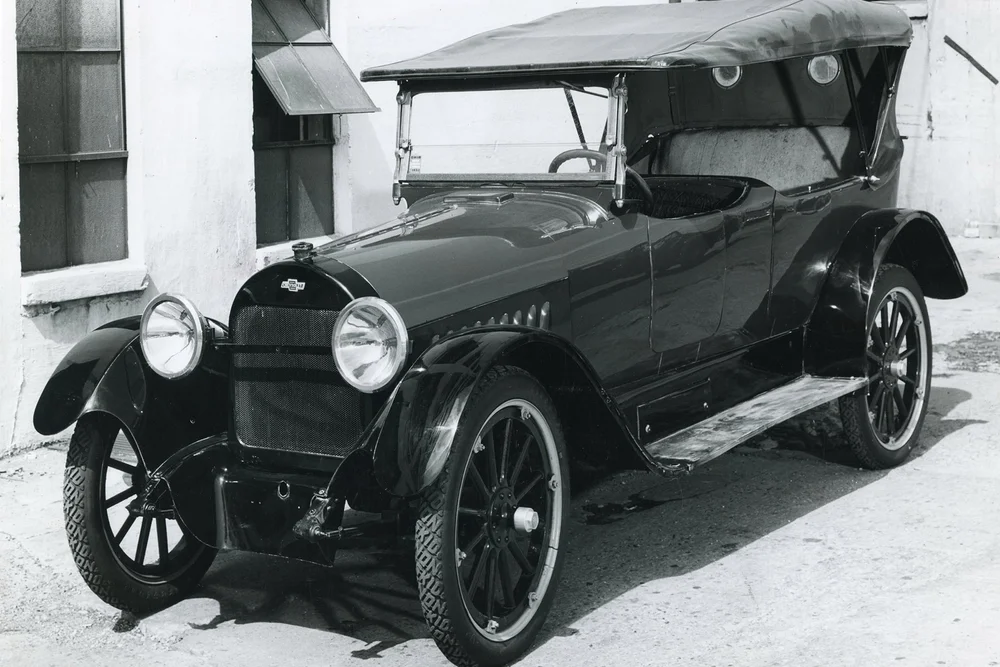
Photo courtesy of the Petersen Automotive Museum archives
At the 1914 New York Auto Show, the H-3 Amesbury Special made its debut. The production specials were the first Chevy cars to carry the famous bowtie badge (said to have been inspired by wallpaper in a French hotel and scribbled on a napkin by Durant). There was the five-passenger H-4 tourer called the Baby Grand, which retailed for $875, and the H-2 roadster or Royal Mail sports car, which sold for $750. (You can see an example of a 1914 Royal Mail in The Vault here at Petersen.)
After being hired full-time at Chevy, Stewart revealed his plans for a new, smaller, 4-cylinder car to compete with Ford: the Chevy 490. (It was actually just a small version of the Baby Grand.) Durant had a sense of humor and chose the name 490 because it was the price point of Ford's Model T. With Ford's large profit margin, they were able to get the price down to $440, while the 490 cost $550, a difference. From $110. However, the 490 offered a choice of colours, the standard-issue self-starter, headlight dimmers, speedometer, and electric horn – quite an upscale upgrade. Finally, Durant received his award.
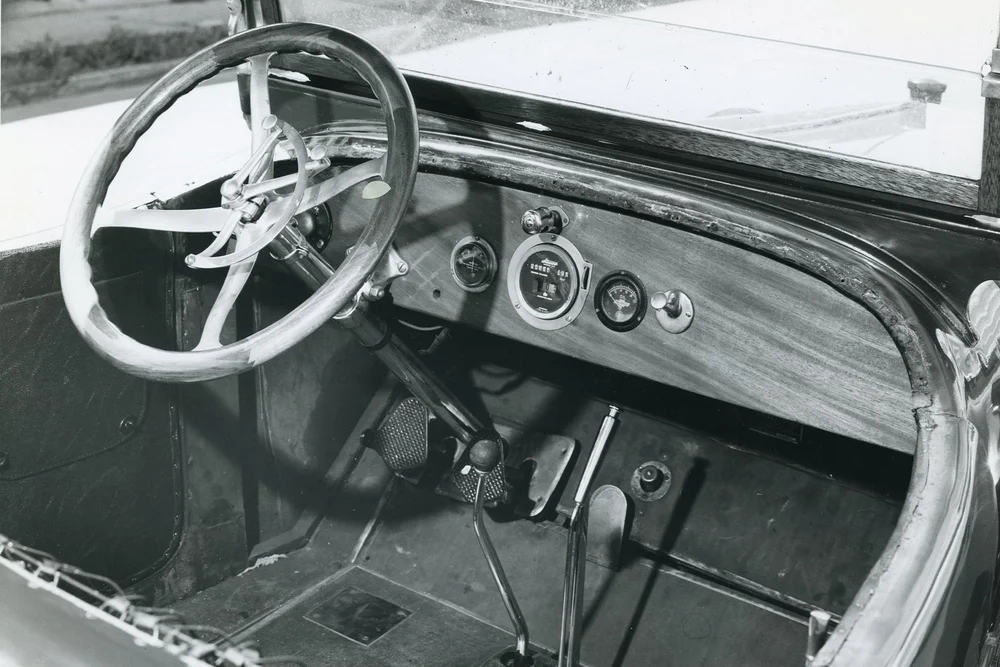
Photo courtesy of the Petersen Automotive Museum archives
The prototype was demonstrated in New York in January 1915 and production began in May. Now with five different Chevy models ranging in price from $690 to $2,510, and a less expensive $490 on the way, Durant has been able to maneuver enough pieces on the chessboard to make his move. With the trust deadline quickly approaching, the net was ready to cast.
While quietly buying General Motors stock, the clever Durant also offered five shares of Chevrolet stock at $18 for one share of GM stock at $80. But in order to beat the financial whales (the bankers), he needed a whale of his own, and he got one – Pierre S. du Pont of the famous DuPont Gunpowder. As an ally of Durant, duPont also bought shares in General Motors.
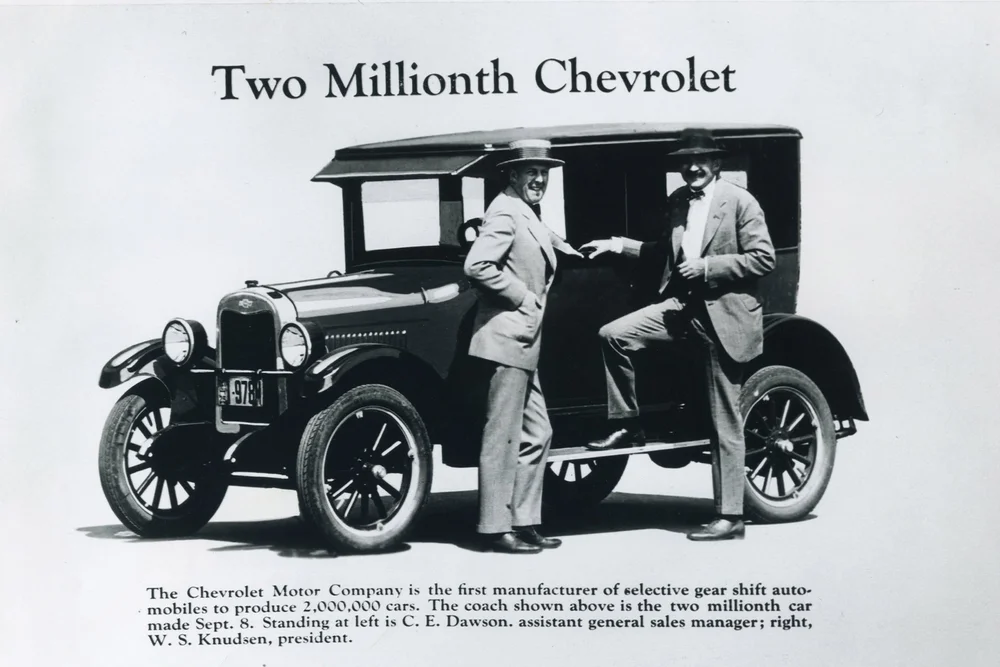
Photo courtesy of the Petersen Automotive Museum archives
On September 16, 1915, seven years to the day that Durant first founded General Motors, GM's executives gathered only to be interrupted by Durant, who threw the stock certificates on the table as he declared: "Gentlemen, I now own more than 50 percent of this company!" Although it took several months to settle the matter, Durant eventually took over, and Chevrolet Motor Company, the sole brand, absorbed all of the group that was General Motors (Chevy actually owned 54.5% of all GM shares). The banker Storro was fired, and Durant was the champion once again, making Chevrolet a name to be reckoned with for more than a century.
The Count of Monte Cristo had his revenge, and his Chevrolet company was about to outsell the Ford Model T on its way to helping General Motors become the world's largest automobile manufacturer.
See historic cars from the early 1900s at The Vault!
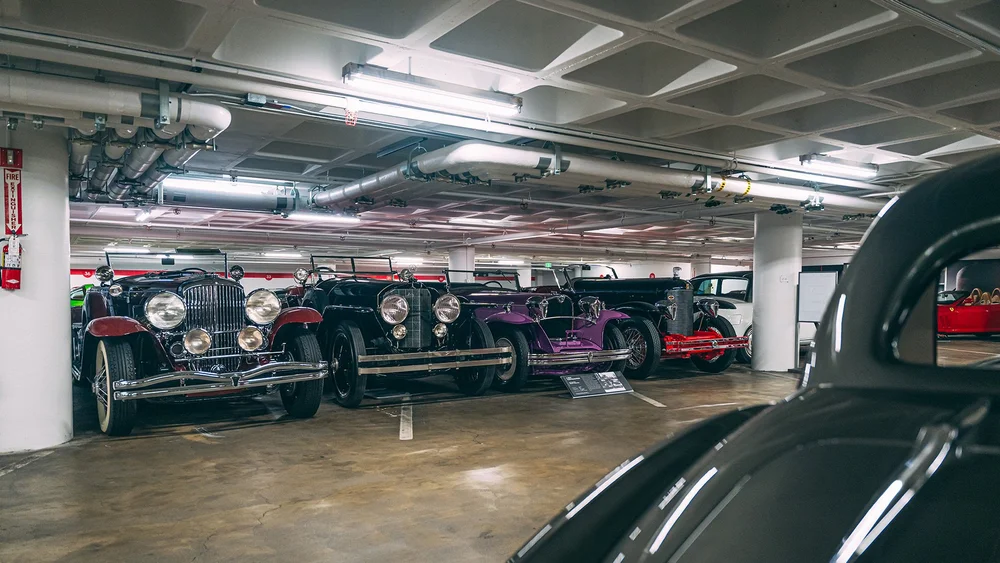
Visit The Vault, and learn about the history of the car.
Walk through automotive history as you explore the secrets contained within our Vault collection! Recently opened to the public, this is your chance to visit and see all the cars we have stored for preservation and future exhibitions.
He learns more
Discover spotlights for Chevrolet vehicles

